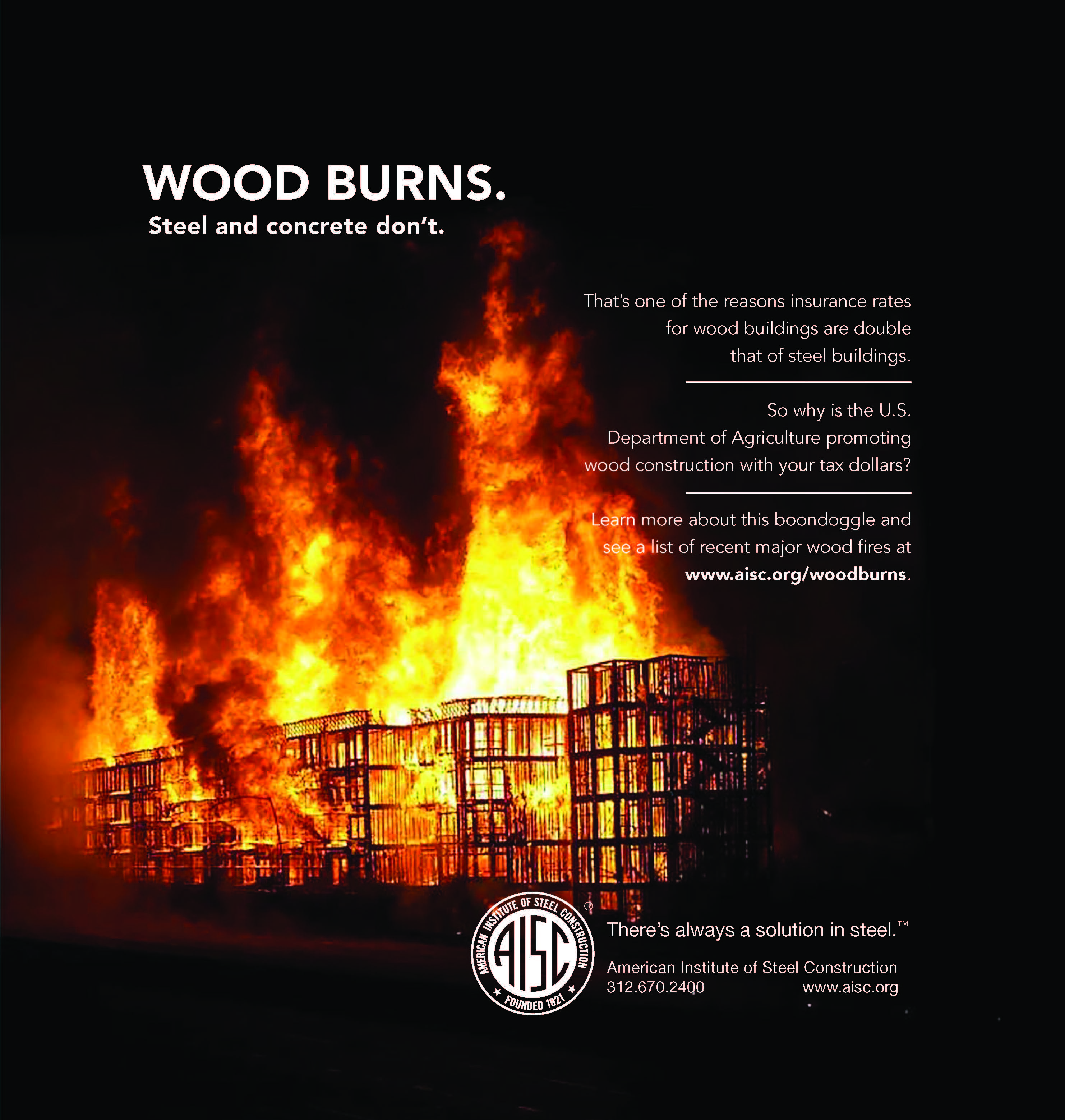Why Steel
Wood Burns
Wood burns, even though the wood industry and the Department of Agriculture seem to want you to believe it only "chars."
Charring is burning
When wood burns, the building burns with the wood adding fuel to the fire and accelerating its spread through the building. The fire also reduces the strength of the wood structure and its ability to support the building's loads.
There have been a large number of recent, catastrophic fires in multi-story wood buildings.
Fires in Steel & Concrete vs. Wood
When there is a fire in a steel or concrete building, the structure doesn't burn; only the finishes and contents inside the building. Following a fire, steel and concrete buildings can be rehabbed and reused again. The same is not true for combustible wood construction. That's why the All Risk insurance rates for wood buildings are double those for steel buildings.
Building codes limit the size and height of wood buildings in order to protect the occupants of such buildings because the structure itself is combustible. Those limits are based on the extensive lessons learned from history -- beginning with the disastrous consequences of the Great Chicago Fire in 1871, and relearned all too often. They're based upon years of firefighting experience and firefighter safety, too. Yet, the wood industry wants to raise those limits based on dubious aesthetic and environmental claims. The wood industry also promotes spurious economic claims that already are discredited by higher costs for timber construction relative to steel and concrete solutions on real buildings. In spite of all of this, the Department of Agriculture is using your tax dollars to support the wood industry's obfuscations.
Hidden Taxes in Wood Purchases
Every piece of softwood lumber purchase in the United States carries with it a hidden tax that goes to the Department of Agriculture. The Department then gives the money it collects (approximately $15 million per year) to the wood industry to promote the use of wood in construction. The tax is disguised by calling it a checkoff program, but the bottom line is that the bill is ultimately paid for by the U.S. consumer.
Your Tax Dollars are Spent Promoting & Researching Wood
The Department of Agriculture is providing direct funding from their annual budget to conduct seminars, training architects and engineers to design in wood and subsidizing projects to the tune of $1.5 million in grants for projects that use cross-laminated timber. This is in addition to millions of dollars spent on wood research projects conducted by the U.S. Forest Service.
And now, the wood industry is lobbying for more such support in the form of the "Timber Innovation Act of 2017" (S. 538), which would authorize the Department of Agriculture to conduct research, development, education and technical assistance to promote wood construction. In addition, an annual competition for the design of wood buildings greater than 85 feet in height will be conducted with the winners receiving federal grants to help finance their construction.
The fire protection claims regarding timber char are a fallacy. Both timber and wood structural members are always likely to require wrapping with a fire protective material to insulate them from the effects of fire, which will eliminate any purported aesthetic benefits. The environmental claims made on behalf of wood are dubious, misleading, and incorrect. And the economic arguments are completely false as evidenced by the higher cost and subsidies needed to cause projects to be built in timber.
Why should your tax dollars be spent promoting wood when the steel and concrete industries fund their own promotion?
Real sustainability is not a function of choosing one material or another. It is rather a function of using appropriate materials properly. So why is government funding being allocated to create more use of wood in cases when steel and concrete would be more cost effective, sustainable, appropriate and proper?
Contact your congressional representative now to complain about this assault on life safety and waste of taxpayer dollars.

